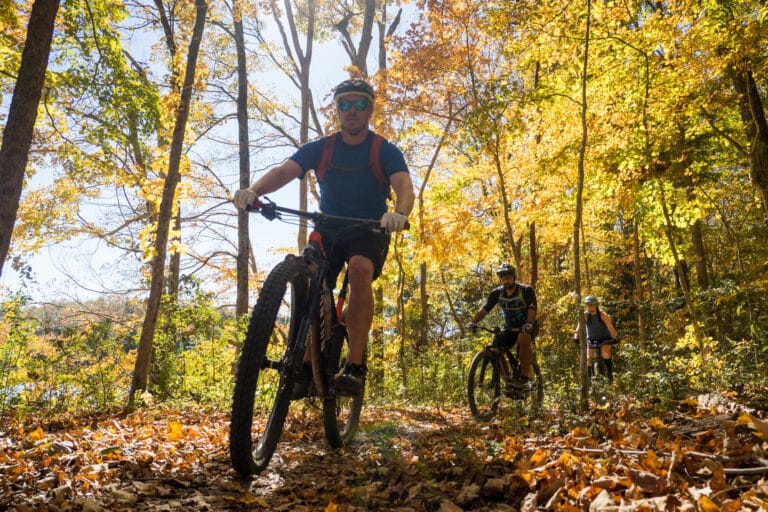by Chris Joyell
Hugh Irwin’s job regularly requires him to get out in our National Forests. That’s because, as the Conservation Planner with Southern Appalachian Forest Coalition, Hugh investigates Forest Service logging projects. Today, we’re headed up the Looking Glass Rock Trail to get a better look at a forest recently proposed to be logged.
Looking Glass Rock is a popular trail that receives heavy use throughout the summer and the autumn color season. Looking Glass Rock itself is a giant granite dome, the remnants of volcanic activity millions of years ago. The hike is six miles roundtrip with steep climbs to the top of the magnificent dome, which overlooks the Shining Rock Wilderness Area.
We begin the hike along a creek that gently winds through a rich open forest. A vireo can be heard singing from a nearby treetop. White trillium and trout lilies stand out against the dark banks of the creek.
Soon, we begin climbing up a series of switchbacks as we wind our way up the backside of the dome. As we ascend, the soils become drier and less fertile. Table mountain pines appear to cling to solid rock, hanging on for dear life. We pass an open bald with large white “H” painted on it. This is the helipad used for transporting injured hikers and rock climbers-a good reminder for us to watch our step as we approach the summit.
The trail ends atop the giant granite dome, offering panoramic views of Shining Rock Wilderness and the Blue Ridge Parkway in the distance. But Hugh focuses on the forests in the immediate foreground. He points out several large, uniform depressions along the face of nearby ridge-the blocks of stunted forest look like footprints left by a wandering giant. “These are the scars left by past clearcuts,” he says. Through the early ‘90s the Forest Service used clearcuts as the primary method for logging. These areas have not recovered; they still suffer impacts to species diversity and forest structure.
“In a couple of years,” Hugh continues, redirecting our gaze back to prominent ridge between us and the Parkway, “you might be looking at yet another scar.”
The Forest Service has proposed to log Case Camp Ridge, a popular recreation area that is known to include old growth forests, a rich variety of wildlife, and numerous hiking trails. Intense logging, road reconstruction, and herbicide spraying are proposed on 1,200 acres, all within full view from where we stand on Looking Glass Rock.
The Forest Service routinely proposes to log forests near the Parkway, but they often conceal their cuts in low-lying coves and on the backsides of ridges-forests not visible from the Parkway, but certainly visible to anyone who cares to wander off the road and into the woods.
In response, the Southern Appalachian Biodiversity Project is mounting a grassroots campaign to protect Case Camp Ridge. The Forest Service needs to hear from those of us who venture off the Parkway-hikers, bikers, climbers, and runners-people who value our national forests for more than just the nice views.
</em>
For more information on how you can help protect Case Camp Ridge and recreation in the Looking Glass Rock area, visit www.sabp.net.
</em>







